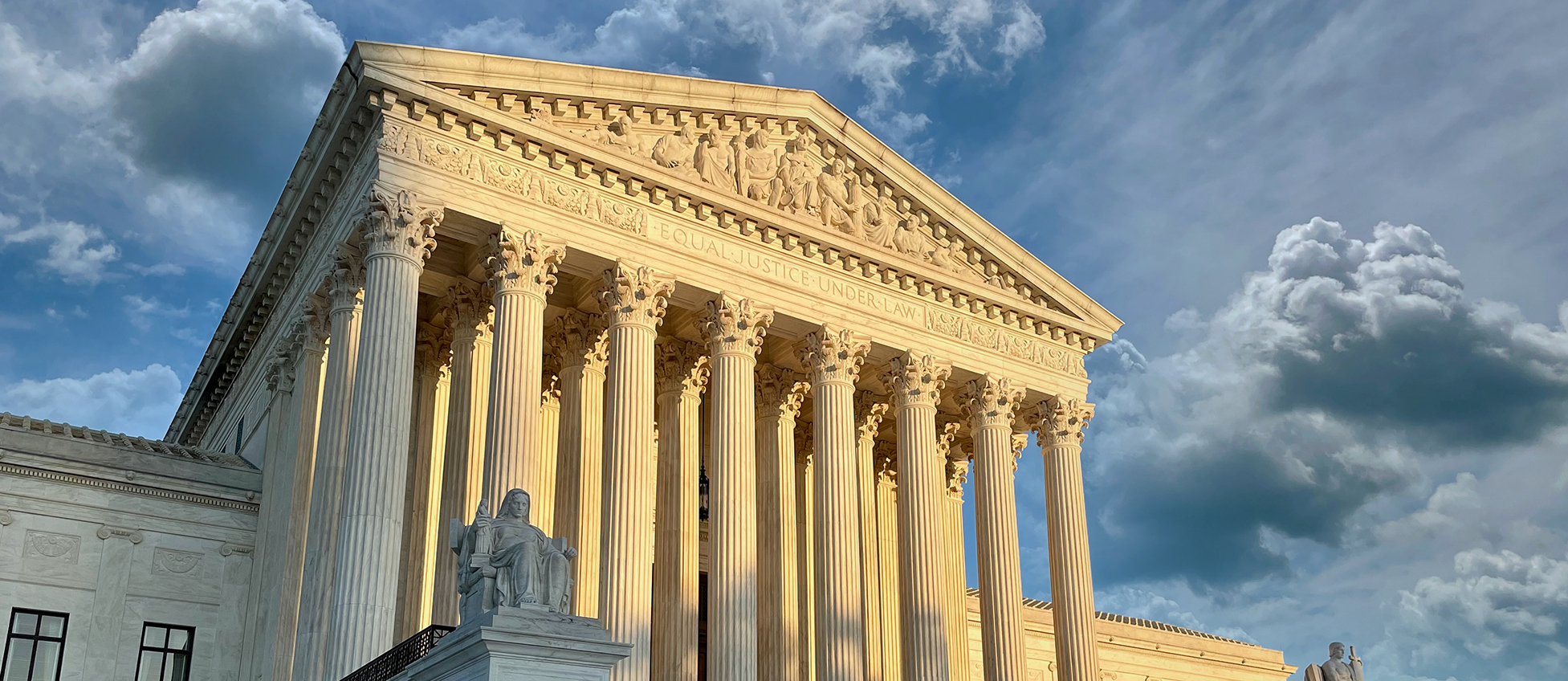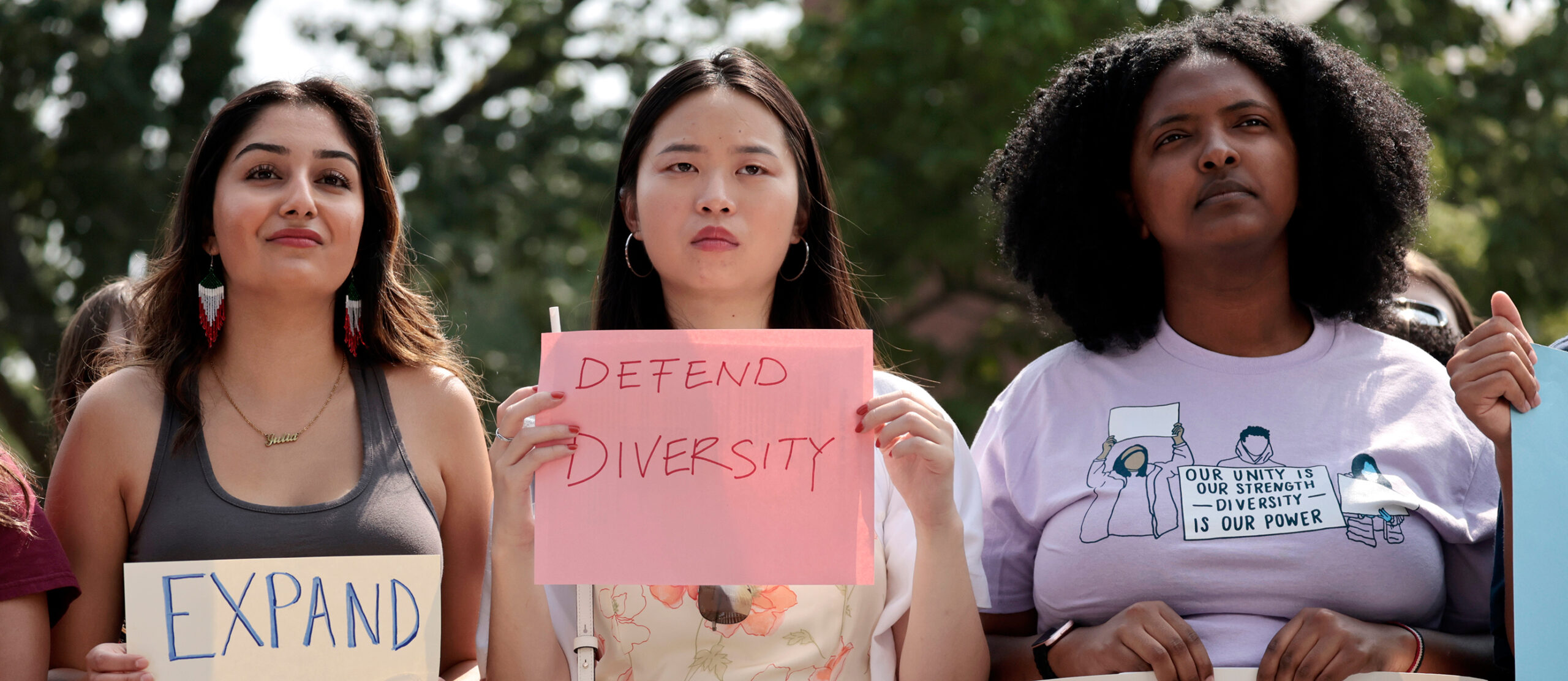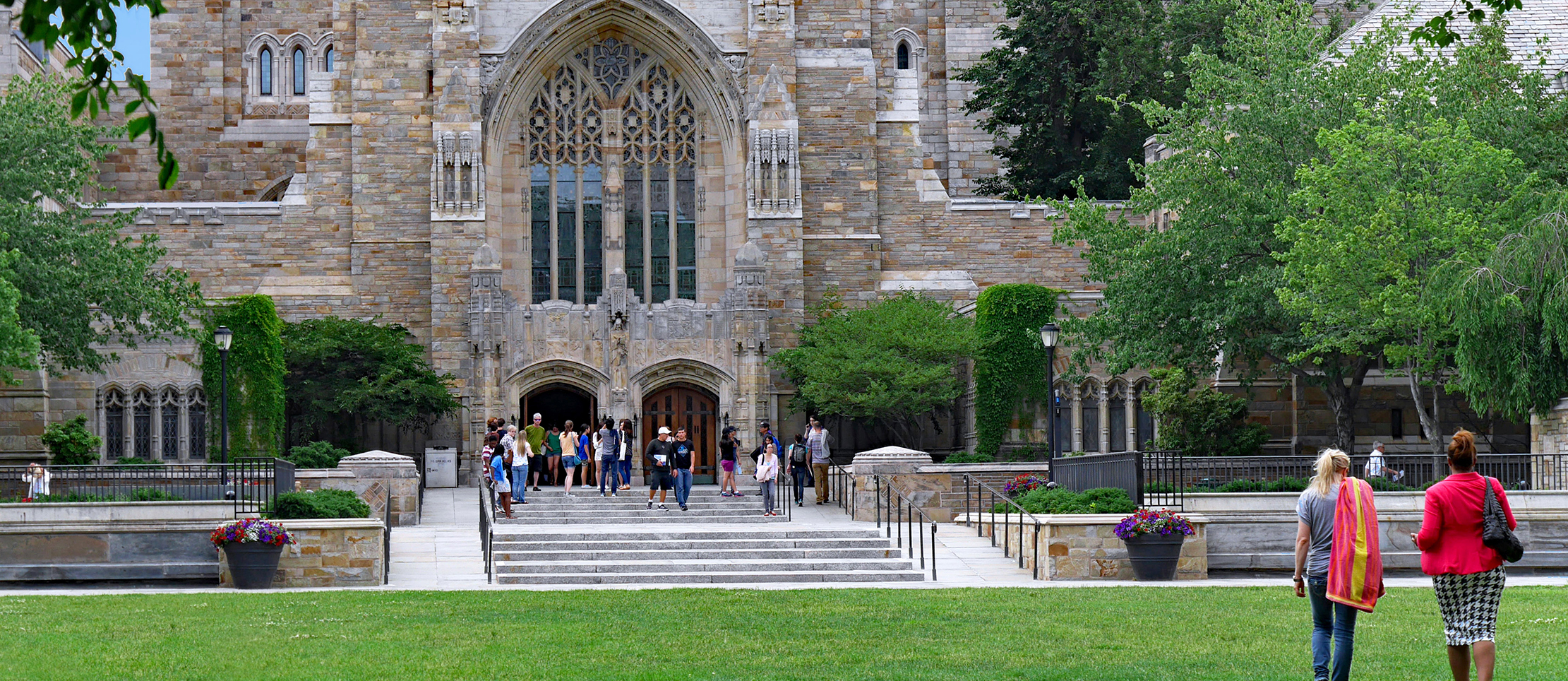
Affirmative Action Q&A
Expert answers to the most pressing questions on Supreme Court decisions in SFFA v Harvard/UNC
[ Download the PDF ]
The decisions are complex as are the slew of questions stemming from the decisions.1 To best clarify the actual impact of the SCOTUS ruling, the Lawyers’ Committee has developed this page as a resource to help answer questions for communities and advocates to better understand the decisions and to answer questions on how to move forward to ensure racial equity and access to opportunity in higher education.
With co-counsel, the Lawyers’ Committee for Civil Rights Under Law2 represents a multiracial group of student- intervenors in the UNC case and argued that case before the Supreme Court helping to defend affirmative action; and we represent student-amici in the Harvard case and student and organizational intervenors in another affirmative action case pending in the Western District of Texas, SFFA v. University of Texas at Austin.
Should you need legal advice, please consult with an attorney.

The Decisions
Did the Supreme Court overrule Grutter v. Bollinger (2003) and ban all race-conscious admissions?
May universities still include diversity as a goal and/or as part of their missions?
Yes, institutions of higher education may continue to include, and pursue, diversity as a goal and as part of their missions. The Court circumscribed how universities may consider race as a plus factor in admissions but it did not hold that universities must abandon their own diversity goals and missions, including racial diversity among broader diversity. Such aspirations remain a bedrock principle for creating a thriving multiracial democracy. And nothing in the opinion suggests that diversity, equity, inclusion, and access (DEIA) campus programs are at-risk.
Do these decisions affect the Court’s interpretation of Title VI?
No, the decisions did not alter the Court’s interpretation of Title VI of the Civil Rights Act of 1964. Like in prior Supreme Court decisions, the Court interpreted Title VI’s prohibitions against the use of race as coextensive with the prohibitions outlined in the Fourteenth Amendment’s Equal Protection Clause. Essentially, this means that Title VI does not place greater restrictions on universities in pursuing diverse student bodies.
Under what circumstances may a university consider race in its admissions program?
Institutions of higher education can continue considering race as a plus factor in its admissions programs so long as those programs satisfy strict scrutiny (i.e., are narrowly tailored to achieve a compelling government interest). In these decisions, the Court found that Harvard’s and UNC’s programs did not meet that high burden because: 1) they did not have a stated endpoint; 2) the objectives were not measurable; 3) they used race as a negative factor, and 4) they used race to stereotype applicants.
The Court’s decisions also left open the possibility that race-conscious admissions programs could be upheld under a different compelling interest. This could include, for example, remedying specific acts of an institution’s past and present discrimination, or potentially addressing pervasive racial harassment on campus caused in part by the reduced number of students of color on campus.
Critically, and as further discussed below, the Court emphasized these decisions do not prevent institutions of higher education from considering an applicant’s racial experiences in the admissions process, so long as those lived experiences are linked to what a particular student can uniquely contribute to the institution.
Given the gross misapplication of Brown and the grander history behind the Equal Protection Clause showing an intent both to advance opportunity and end the subjugation of Black and other people of color, it is possible that the ruling in this case could be overturned as egregiously wrong by a future court.

Students
What role did students play in these cases?
Students played a critical role in both the UNC and Harvard cases, demonstrating to the Court why race and racial experiences are relevant to consider in a holistic admissions plan. In UNC, a diverse coalition of students served as parties to the case as “Respondent-Students,” and in Harvard, a multi-racial group of students and student organizations served as “Amici” (“friends of the court” who were not parties but were allowed to participate in the proceedings). Collectively, these students challenged SFFA’s assertions by testifying in court and submitting briefs and arguments in support of race-conscious admissions.
Student testimony and advocacy, along with immense support from other amici filing briefs with the Court, can be fairly credited with the majority’s express acknowledgement that universities may continue to consider a student’s racial experience when raised in their applications. Student testimony and their briefs were also cited several times in the dissents, highlighting the importance of racial identity in the college admissions process.
May students discuss their race and the role it has played in their life in their college applications?
Yes, students can and should continue to discuss their race and its impact in their lives as relevant in their undergraduate and graduate admissions applications. The Court clearly stated that “nothing in this opinion should be construed as prohibiting universities from considering an applicant’s discussion of how race affected his or her life, be it through discrimination, inspiration, or otherwise.” For example, this could be raised in response to essay questions or in identifying their extra- and co-curricular participation and involvement in affinity groups and cultural organizations in their admissions application. Should universities attempt to censor, penalize, or otherwise exercise bias against students expressing their racial experiences in their applications, they should be aware that they could be subjecting themselves to liability under the First and Fourteenth Amendments and should consult an attorney.
Can students still apply for scholarships that may be targeted to their race or ethnicity?
Nothing in the decisions suggests that students may not continue to apply for and receive such scholarships. Students are encouraged to continue to apply for all resources available to them to help pay for college. This is especially important for students of color who particularly experience higher levels of debt after graduation.

Universities
May universities consider racial experiences, among other experiences and qualifications, in making admissions decisions?
Yes, universities can continue to favorably consider a student’s racial experiences among other factors and experiences when their consideration of such experiences are “tied to that student’s unique ability to contribute to the university.” In other words, universities can continue to consider applicants for a broad range of characteristics that may be informed by their racial experiences, like resilience, openness, or bravery.
May universities request that students applying for admission indicate their race for the purposes of gathering demographic data?
Yes, universities can continue to gather racial demographic information for applicants applying for admission, so long as they do not use that information to award a plus as a direct result of any applicant’s race. In fact, many universities may want to collect and analyze this data to ensure their admissions officers are not being biased against any racial or ethnic groups following the decisions and any revisions made to admissions policies.

K–12 Schools
How do the decisions affect integration efforts in K-12 schools?
These decisions do not impact K-12 integration efforts, as they only concern higher education admissions. Outside of active school desegregation cases, K-12 schools do not typically engage in affirmative action.
May K-12 schools use race-neutral plans to ensure schools are diverse across backgrounds?
Yes, K-12 schools are free to consider race-neutral plans to ensure greater student body diversity so long as the admissions plans do not intentionally seek to exclude any group of students on the basis of their race or national origin. Many of the K-12 race-neutral plans are attempting to bring together students together across backgrounds, including those who are English learners, who are from lower socioeconomic status, those with disabilities, and those from different racial backgrounds. But they are not treating and excluding any individual students based on their race. Thus, such plans should not run afoul of the Equal Protection Clause.
I’ve heard there are cases challenging race-neutral plans and that such decisions could impact both higher education and K-12 schools. Should I be concerned?
There are current cases being litigated in Virginia, Maryland, Massachusetts, Pennsylvania, and New York. In these cases, school districts were essentially responding to community concerns that historically marginalized students of color, low-income, English learner, and/or students with disabilities were being excluded from highly coveted, specialty public high schools. The districts revised their policies to ensure that they were not excluding such students, thus making them more accessible. Other students represented by far right-wing legal groups sued, alleging they were being excluded even though they still constituted large majorities or pluralities in the schools. Thus far, none has been successful in challenging race-neutral admissions plans.
- See our summary analysis of the decisions, “Navigating the Affirmative Action Rulings: An In-Depth Analysis.” For additional resources from the U.S. Departments of Education and Justice, please see: Dear Colleague Letter and a Questions and Answers.
- The UNC student-intervenors are also represented by the North Carolina Justice Center and Relman Colfax. Harvard Student-Amici are represented with co-counsel Asian Americans Advancing Justice | AAJC and Arnold & Porter. In the UT-Austin case, our pro bono counsel are from Hunton Andrews Kurth. The statements in this document do not reflect the opinions of co-counsel or our clients.
